Traditional Yorkshire Parkin
This post may contain affiliate links. See my disclosure policy.
If you’re a fan of gingerbread and are looking for something uniquely different – this traditional Yorkshire Parkin recipe is it! From Yorkshire, England, Parkin is an age-old cake featuring oats and black treacle (molasses) to create a delightfully sticky, chewy cake with a deeply robust flavor that only improves with time!
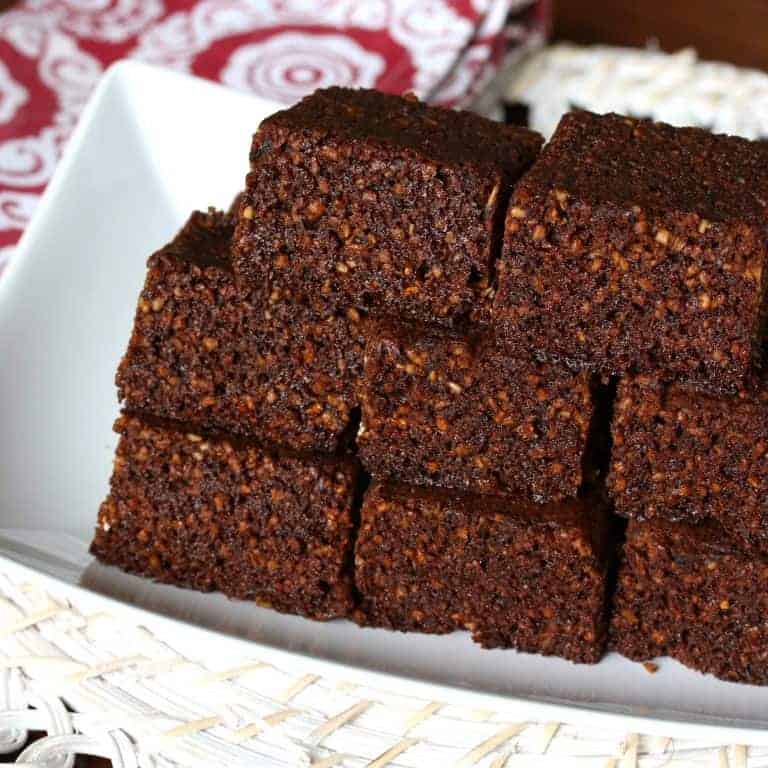
Where Did It Originate?
The year was 1728. Banging his gavel, the magistrate of the West Riding Quarter Session called the courthouse to order. The accused was brought forward. Standing erect in a pose of dignified capitulation, Mrs. Anne Whittaker, occupation housewife, listened as her offense was read aloud.
The crime: She had stolen oatmeal.
Her defense: Why, to make Yorkshire parkin, of course.
The verdict: Guilty as charged but dang, was the parkin worth it!
True story. And that was one of the first ever published references to Yorkshire parkin, the crime of theft, of culinary passion, all in the name of this centuries-old cake.

What is Parkin?
Parkin is a traditional gingerbread cake that originated in Northern England and is made with oatmeal and molasses-like treacle. Traditionally parkin is associated with the month of November with the first Sunday of the month known as “Parkin Sunday.” Specifically it is a key element of Bonfire Night, or Guy Fawkes Night, where the cake is eaten as part of the festivities. However, parkin is also commonly eaten throughout the winter months.
This traditional Yorkshire specialty, though bearing some similarities to gingerbread, is probably very different from anything you’ve had before. It’s as bold, hearty and unforgettable as Yorkshire itself.
I lived in England for 7 years about two hours south of Yorkshire. We go back at least once a year and love exploring and hiking through Yorkshire. It’s such a beautiful area of the country.


Parkin Ingredients
Parkin is commonly associated with Yorkshire, England though it is also eaten in Lancashire. There is at least one key difference between the two versions however: Yorkshire parkin traditionally uses black treacle resulting in a very rich and dark flavor and color.
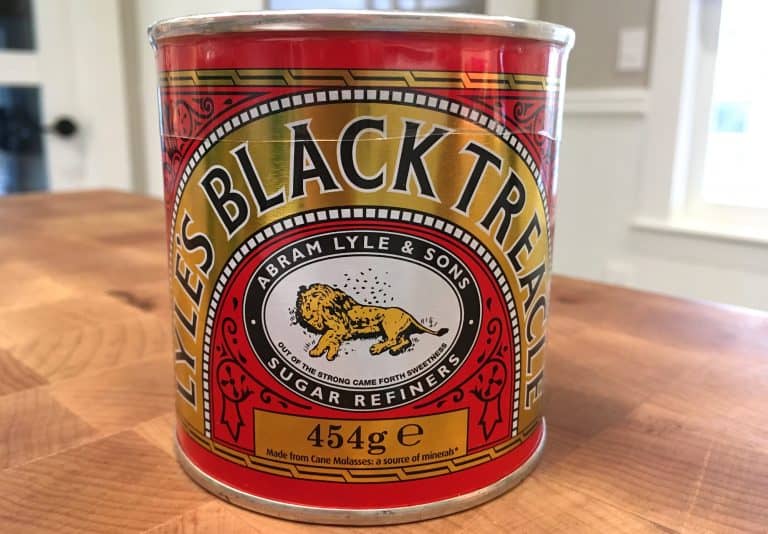
Lancashire uses golden syrup, resulting in both a lighter color and flavor. Lancashire parkin also tends to be sweeter with a higher sugar content.
Many modern recipes for both versions cross regional lines and use some of each. It comes down to personal preference. We’re featuring a more traditional Yorkshire parkin that is heavy on the treacle/molasses with a little golden syrup, but feel free to adjust the black treacle to golden syrup ratio according to your preference. If you’re not sure, go with less treacle and more golden syrup than what this recipe calls for – traditional Yorkshire parkin produces a very bold flavor that you may not be used to.
Important Note: While you can substitute molasses for black treacle, there is no substitute for golden syrup. Corn syrup is not remotely the same thing. It is starkly different in flavor with golden syrup having a wonderfully rich, caramelized flavor. Again, be sure to use genuine golden syrup.
Parkin uses black treacle and/or golden syrup in large quantities resulting in a delightfully chewy, sticky cake.
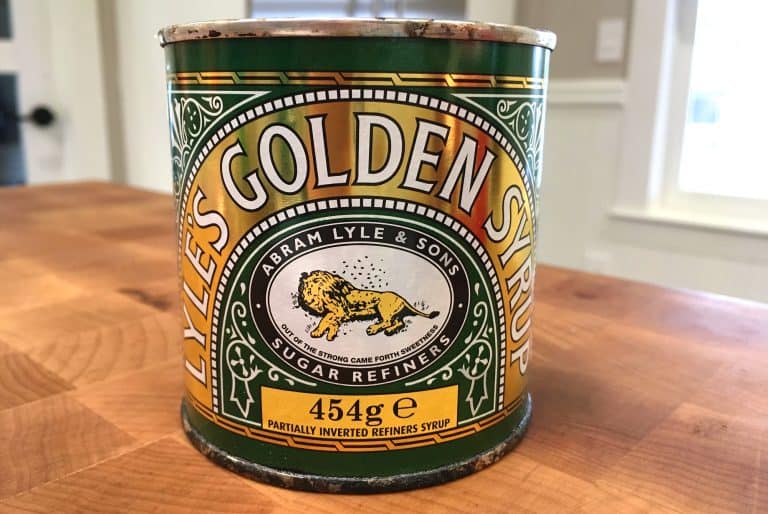
You can also very easily make your own golden syrup.
Check out our recipe for homemade Golden Syrup!
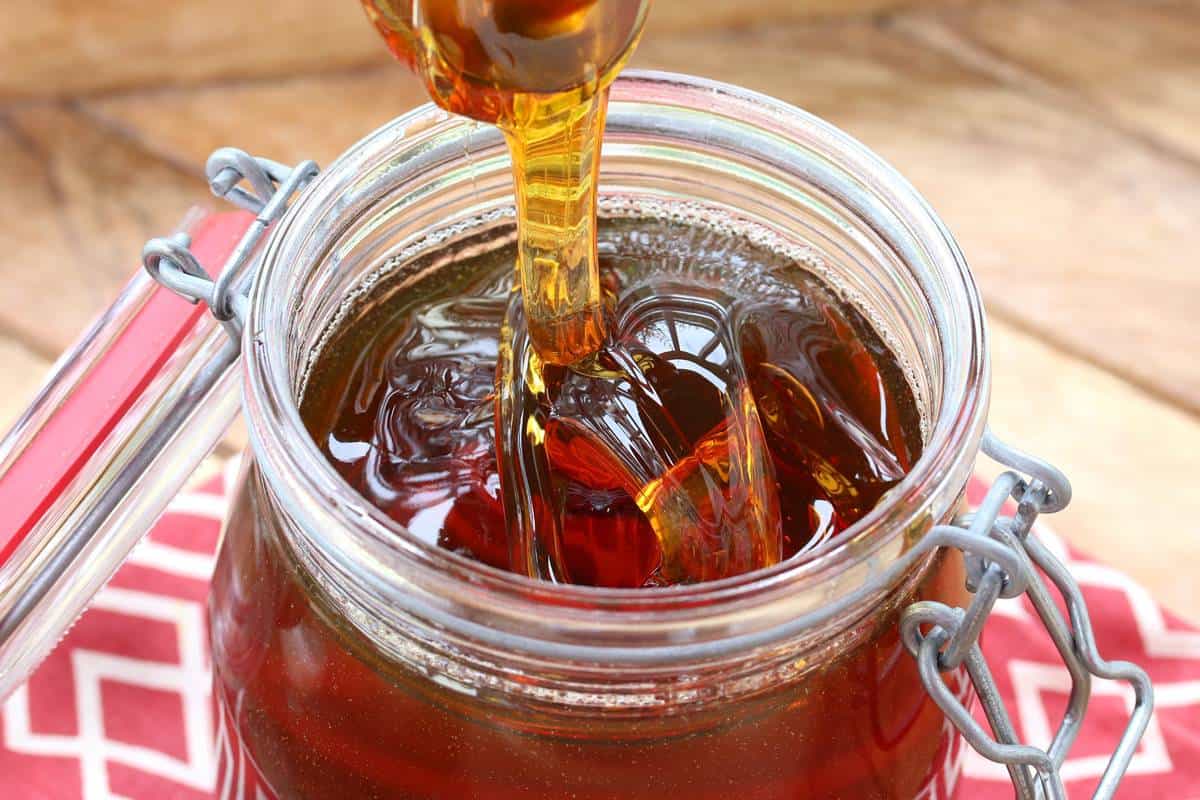
LET’S TALK OATS. Aside from the high quantity of black treacle and/or golden syrup, another thing that makes parkin unique is the addition of oats. Yorkshire parkin simply isn’t Yorkshire parkin without oats. Oats, not wheat, were the staple grain of the poor in this region and that is the primary grain in Yorkshire parkin. The form of oats traditionally used in parkin is not rolled outs, it’s what’s referred to as medium oatmeal in England.
Whole oat groats are dehusked and can either be milled into a fine, medium or course “oatmeal.” Parkin calls for medium. An easy way to make “medium oatmeal” yourself is to take steel-cut oats (also known as Irish oats in the UK) and pulse them briefly in a food processor until they are broken down but not to a fine flour, you want some small chunks to remain which will be visible in the finished parkin and contribute to that wonderful chewy texture of the cake.
Traditionally Yorkshire parkin is also made with lard instead of butter. Lard adds a layer of richness and also creates a moister cake. We’re using some of each to get the best of both worlds but you can use all butter if you prefer.
Finally, a very important key to making parkin is to LET IT SIT IN A SEALED CONTAINER FOR AT LEAST 3 DAYS BEFORE EATING. The resting time is what develops both the texture and the flavor of the cake and is essential. The oats will soften, the treacle and golden syrup will fully penetrate and soak through the grains, and the flavor of the spices will fully develop. So don’t be impatient, let time do its intended job!
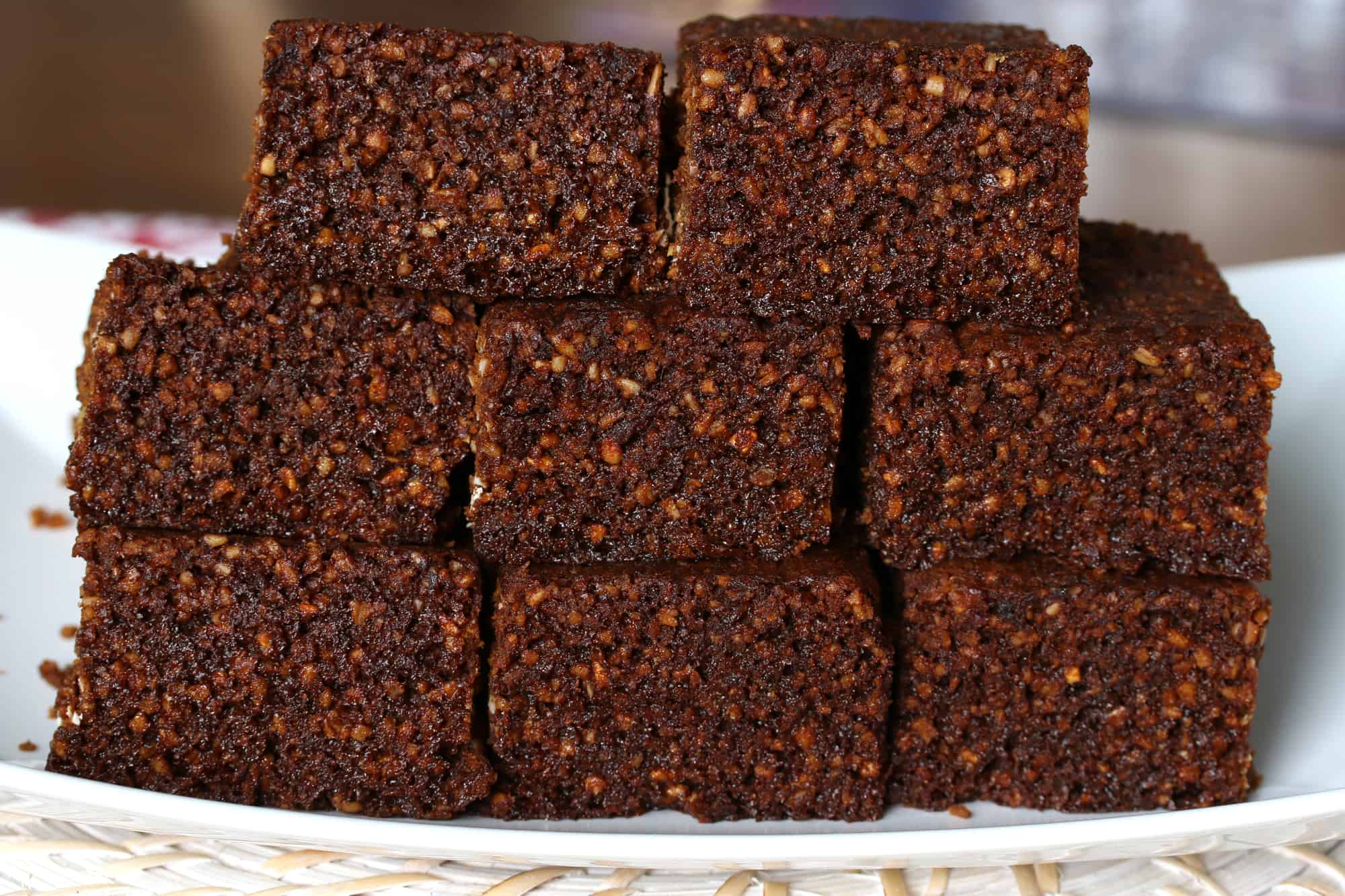
And so we present Yorkshire Parkin, that famously dark, rich, chewy, sticky, deeply flavorful cake that is the provides the perfect sweet comfort for those cold Fall and Winter nights!
If you’re a fan of gingerbread and are looking for something uniquely different – this is it!
And remember, even Mrs. Whittaker was willing to risk jail time in order to make it!
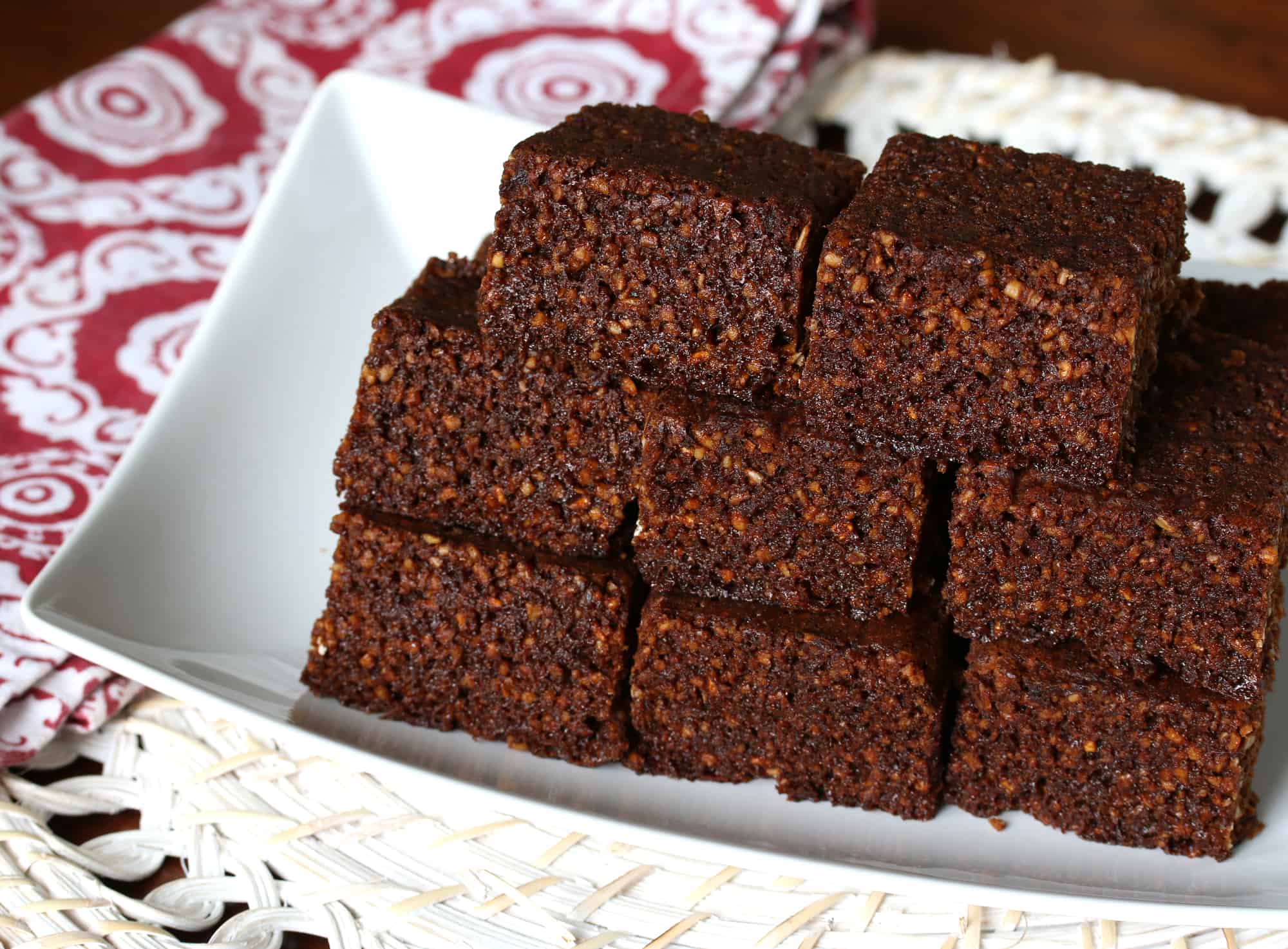
Traditional Yorkshire Parkin Recipe
Let’s get started!
Place the medium oatmeal (see blog post and recipe box for a description of what that is and how to make it) in a large bowl along with the flour, spices, salt and baking powder.
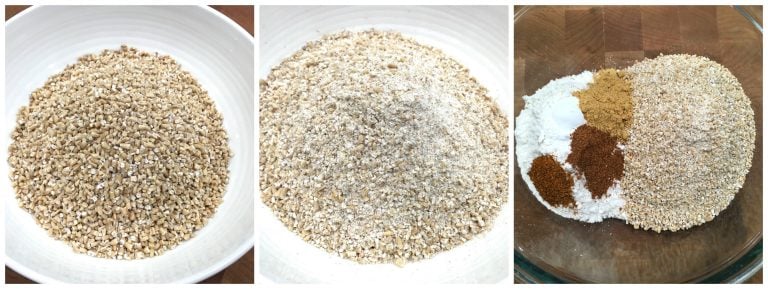
In a medium saucepan add the brown sugar, black treacle, golden syrup, butter and lard (if using).
Heat the mixture until the sugar is melted (don’t boil it) and remove from the heat. Let it cool for 5 minutes.
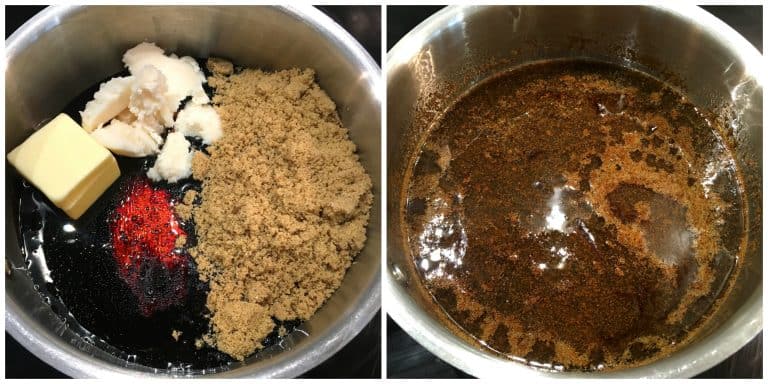
Pour the hot mixture into the dry mixture and stir well to combine.
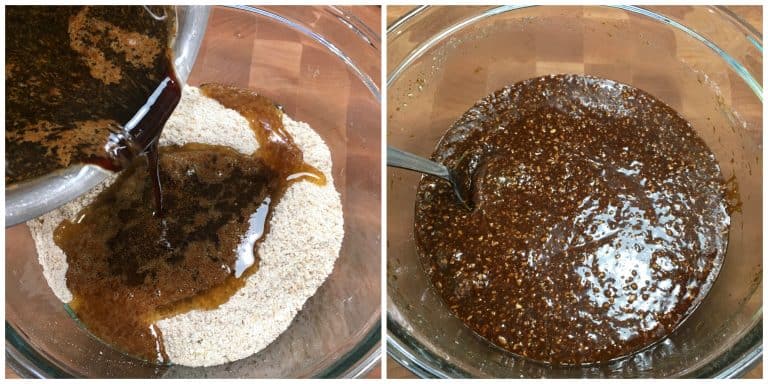
Add the candied ginger, egg and milk and stir well to combine. The batter will be liquid and sticky.
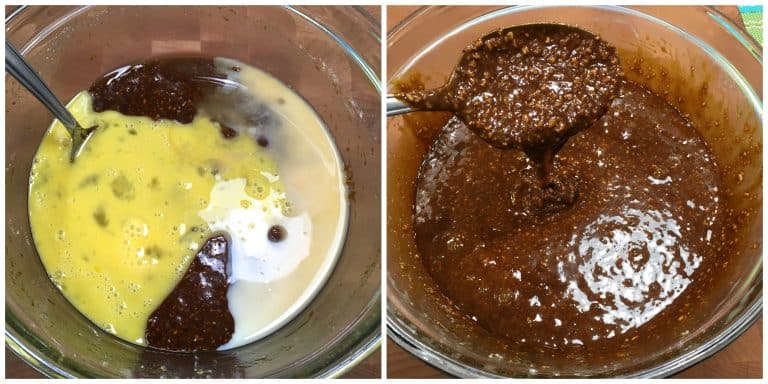
Generously grease an 8×8 inch baking pan and line the bottom with parchment paper.
Pour the batter into the baking pan and smooth the top. In an oven preheated to 300 degrees F, bake the parkin for 70-80 minutes or until a toothpick inserted into the middle comes out clean. The cake should be fairly firm but springy.
Let the cake cool in the pan.
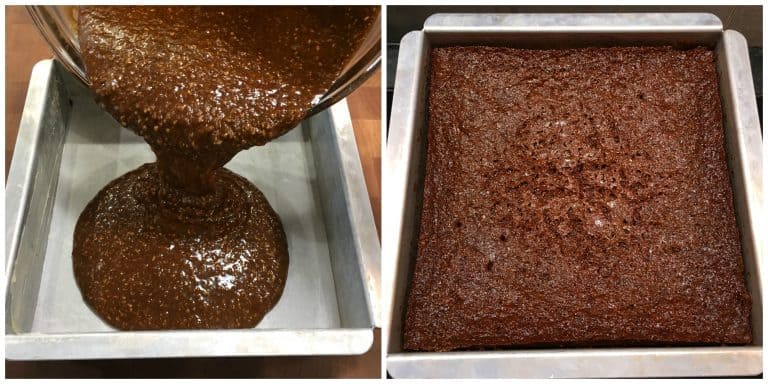
Invert the cake onto a platter. Peel off the parchment paper. Cut the parkin into squares.
Place the squares into an airtight container and let it sit for at least 3 days before eating.
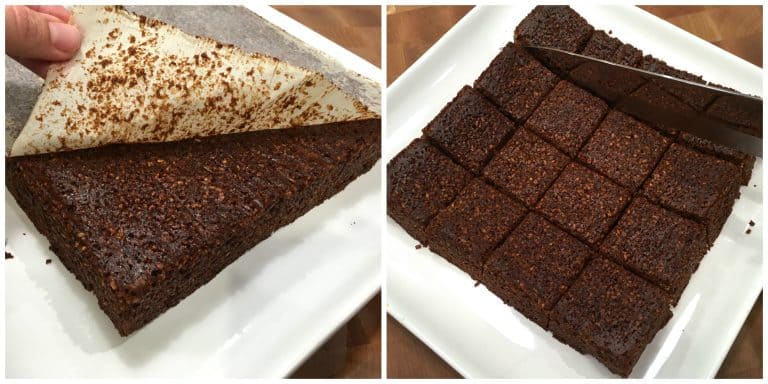
Enjoy!

For more authentic British treats try my:
- Treacle Tart
- Crumpets
- Spotted Dick
- Rock Cakes
- Sticky Toffee Pudding
- Chelsea Buns
- Hot Cross Buns
- Eccles Cakes
- Lardy Cake
- Seed Cake
- Flapjacks
- Scottish Shortbread
- Bara Brith (Welsh Tea Bread)
- Barmbrack (Irish Tea Bread)
- Mincemeat
- Mince Pies
- Figgy Pudding (Plum Pudding)
- Victoria Sponge Cake
Save This Recipe

Yorkshire Parkin
Ingredients
- 1 1/2 cups medium oatmeal , see NOTE
- 3/4 cups all-purpose flour
- 1 1/2 teaspoons baking powder
- 2 teaspoons ground ginger
- 1 teaspoon Mixed Spice
- Homemade Mixed Spice Recipe (recommended)
- 1/4 teaspoon ground mace
- 1/4 teaspoon salt
- 2/3 cups Black Treacle (can substitute dark molasses) **See NOTE about the quantity
- 1/4 cup Golden Syrup (there is no substitute, the flavor is very different than corn syrup)
- Homemade Golden Syrup (click link for recipe – it's very easy to make!)
- 1 cup loosely packed brown sugar
- 6 tablespoons butter
- 2 tablespoons lard (optional, can substitute butter)
- 1/4 cup candied/crystallized ginger , finely diced (optional)
- Homemade Candied Ginger Recipe
- 1 large egg , lightly beaten
- 2 tablespoons whole milk
Instructions
- Generously grease an 8×8 inch baking pan and line the bottom with parchment paper. Preheat the oven to 300 degrees F.
- Place the medium oatmeal in a large bowl along with the flour, spices, salt and baking powder. Set aside.
- In a medium saucepan add the brown sugar, black treacle, golden syrup, butter and lard (if using). Heat the mixture until the sugar is melted (don't boil it) and remove from the heat. Let it cool for 5 minutes.Pour the hot mixture into the dry mixture and stir well to combine. Add the candied ginger, egg and milk and stir well to combine. The batter will be liquid and sticky.Pour the batter into the prepared baking pan and bake 70-80 minutes or until a toothpick inserted into the middle comes out clean. The cake should be fairly firm but springy. Let the cake cool in the pan. Invert the cake onto a platter. Peel off the parchment paper. Cut the parkin into squares.
- Place the squares in an airtight container and let it sit for at least 3 days before eating (not in the fridge or it will get hard). The oats will soften, the treacle and golden syrup will fully penetrate and soak through the grains, and the flavor of the spices will fully develop.
Notes
Nutrition
Originally published on The Daring Gourmet November 10, 2018

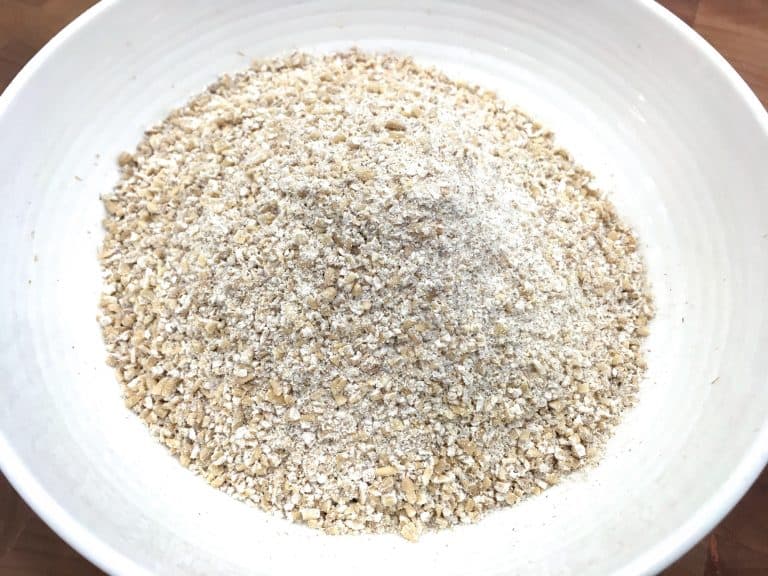


















Made this today and it’s to die for, there’s no way this is going to last three days waiting for it to get sticky
My lot will devours it before then
I’m a Lancashire lass living in Australia and I’ll be sharing this with my friends here
Wonderful! Thanks so much for your feedback, Trish, I’m thrilled you enjoyed it!
Best true yorkshire parkin recipe my grandma used to make this she died in 1984 when I had tried shop bought parkin but nothing ever came close to hers until I tried this recipe and I swear it’s the same brought back memories of my grandma this must be a very old yorkshire recipe
I am so happy to hear that, Stephen, thank you very much for the feedback!
Never heard of this until I discovered it on your site. Then I had to special order the black treacle. Worth all the effort: what a revelation! I used the full amount of black treacle and, though I had been slightly apprehensive, it turned out almost perfectly. The flavor is unlike anything I’ve tried before and I love it! Thank you so much for this. (Now if you could just tell me why it cratered in the center…)
I’m so glad you enjoyed it, Dave, thank you! I agree, it really has a very unique flavor. When cakes sink in the middle it can be for a number of reasons but some of the most common ones are opening the oven door before the cake has set; waiting too long to put the cake in the oven once the batter is mixed; over-beating the batter incorporates too much air which then causes the cake to sink; placing the cake in a cool, drafty place can likewise cause the cake to sink.
This was absolutely delicious. My first time making parkin and I am so glad I followed your recipe with the mixed spice, plus additional ginger, mace, and candied ginger. Other recipes seemed to have only ginger and I imagine aren’t as tasty and fragrant as this one.
Being in the US, I also used your recipe to make the mixed spice, and buzzed my steel cut oats in a food processor. I look forward to making this again and will try to find actual medium oatmeal. Bob’s Red Mill’s Scottish Oats are said to be similar. Thanks so much!
Wonderful, Patsy, I’m so glad you enjoyed this Parkin and that were also made the homemade mixed spice, it makes such a difference. Thanks so much!
Interesting, I am South Yorkshire ancestry on my dad’s side but grew up in the North; first heard about Parkin at school when studying the Victorian times. Nobody in my dad’s family ever made it that I recall. Unfortunately I have never made it either, shame as I love treacle. I must get organised. Will possibly try using suet or dripping instead of lard since I don’t eat any pork products plus I’m intolerant to dairy too so I can’t use butter.
I made my Parkin cake this evening. It’s all we can do to wait the three days to eat it! We first started enjoying it many years ago when given a package to take on a day out drive, for a snack. My husbands aunt had lived in northern Scotland for half a century but is still a Lancashire woman at heart. Though she does bake the black treacle version with lard and thus do I. Now she is gone I use the old recipe she wrote down for me so long ago.
Just a comment.. I love Parkin… but I personally would never use Lard its makes it greasy.. My family recipe goes back 300 years and did not include Lard, although my granny used lard a lot she never used it in cakes… just in pastries. I am a yorkshire Lass born and bred.. In the 1700s West Yorkshire didnt exist.It would have been the West Riding.. which was more than double the size of west yorkshire. It is nice to see some old recipes come to light. and also to share some knowledge.
Hi- Sorry but you included flour in the ingredients, but not anywhere in the method. I’m assuming it is with all other dry ingredients. I’ll try & see how it goes. Thanks